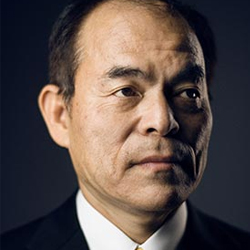Shuji Nakamura is renowned as the inventor of blue LED, a major breakthrough in lighting technology. Together with Isamu Akasaki and Hiroshi Amano, he was one of the three recipients of the 2014 Nobel Prize for Physics "for the invention of efficient blue light-emitting diodes, which has enabled bright and energy-saving white light sources".
The LEDs use as little as one-seventh the energy as an incandescent bulb and can last about 100 times as long, up to 100,000 hours and if they were widely used, it could lead to enormous energy savings and carbon-emissions. Nakamura has also worked on green LEDs, and is responsible for creating the white LED and blue laser diodes used in Blu-ray Discs and HD DVDs
Nakamura joined Nichia Chemical Industries in 1979. In 1988, he spent a year at the University of Florida as a visiting research associate. He started the research of blue LEDs using group-III nitride materials. In the 1990s he developed the first group-III nitride-based blue/green LEDs. He also developed the first group-III nitride-based violet laser diodes (LDs).
Since 2000, Nakamura has been Professor at the Materials Department of University of California Santa Barbara, and is also the Research Director of the Solid State Lighting & Energy Centre. He holds more than 100 patents and has published more than 400 papers in this field.










